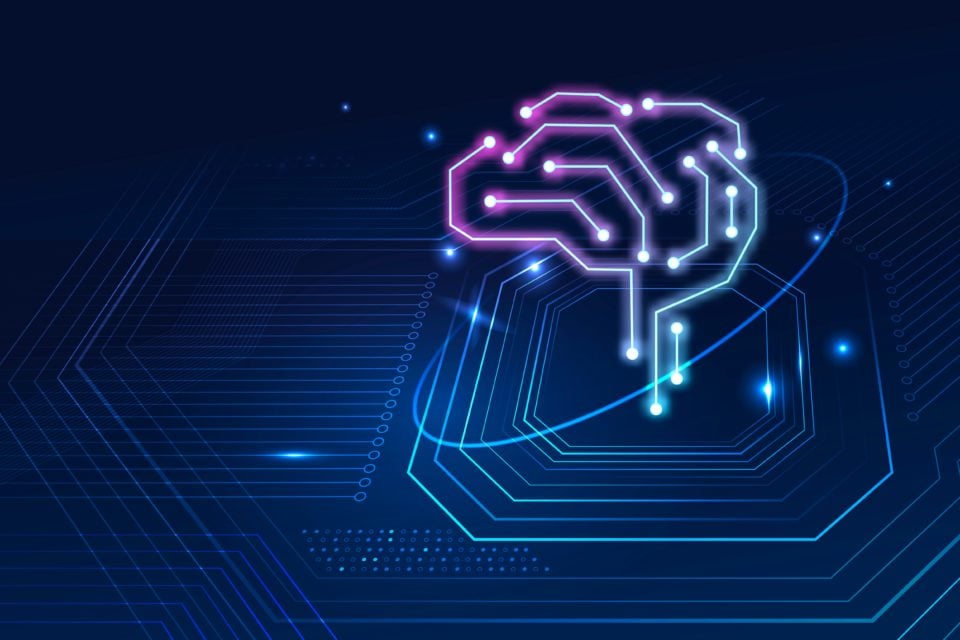Crypto narrative refers to trending ideas, stories or beliefs that shape how people perceive and value cryptocurrencies. These narratives can influence investor sentiment, market trends, and adoption of new technologies.
What is Crypto Narrative?
Market participants are always looking for trends to better understand what is happening, why it is occurring, and their potential impact. Historically, they have used the dynamics of market cycles to act more proactively in future market environments. From Elon Musk’s DOGE price-moving tweets to believing that the Bitcoin halving every four years will lead to bull runs, many investors use crypto narratives to predict price action.
For example, the portrayal of cryptocurrencies as a store of value has attracted the attention of many investors who see cryptocurrencies as a hedge against economic uncertainty. Similarly, the narrative of blockchain as a disruptive technology has attracted many entrepreneurs and developers working to create new applications on blockchain.
Why is the Crypto Narrative Important?
The crypto narrative emerges from a combination of factors such as the technological capabilities of cryptocurrencies, social and economic events, and the beliefs and motivations of individuals involved in the cryptocurrency industry. For example, the launch of ChatGPT in November 2022 started the Artificial Intelligence (AI) narrative that led to significant gains in AI-related coins. Mainstream media, social media, online forums, influencers and market trends can feed the narrative.
Narratives are important because they play an important role in shaping public perception and subsequent market movements. They provide a framework for people to understand the potential risks and rewards of different cryptocurrencies and can influence the course of the entire cryptocurrency industry.
However, crypto narratives can be misleading or harmful based on false assumptions or deception. That’s why it’s important to critically evaluate narratives and base your investment decisions on sound analysis and research.

Top 10 Crypto Narratives of 2023
There are multiple new trends and themes that seek to define the year 2023 and potentially present the next opportunities for big gains. We have compiled the top 10 crypto narratives of 2023 for you.
1. Tier 1
Tier 1s are the primary architectures upon which other blockchain applications, such as smart contracts, are built on. They handle most on-chain transactions and act as the actual sources of public blockchains. Traditional L1 blockchains like Ethereum tend to suffer from slow transaction speeds, low scalability, and high gas fees. This is where Layer 2 blockchains come into play when handling the execution of transactions, leaving L1 to focus on issuing and verifying those transactions on the blockchain. However, new L1 networks are game-changing in terms of transaction speed, cost, and interoperability.
Some examples of Tier 1 projects include:
-Celestia
Celestia is “the first modular blockchain network to power scalable, secure web3 applications.” It does this by “separating consensus from the executive layer”; where Celestia performs the basic function of a consensus system, which is to order transactions and ensure their availability, leaving the processing and validation of transactions to clients running on Celestia. Celestia aims to enable projects to deploy their networks seamlessly without the need to initiate a new consensus. In addition, the project has an impressive team led by PhD holder Mustafa Al-Bassam. This is one of the L1 projects you should definitely watch, especially as they have plans to get local cryptocurrencies in the works.
-Sui
Sui is “a borderless platform for creating rich and dynamic on-chain assets from gaming to finance”. It is the first permissionless L1 network designed from the bottom up to help creators and developers build experiences on the web that serve the next billion users. Sui was founded by a team of former Meta engineers operating as Mysten Labs.
Sui scales horizontally with no caps to meet application demand while providing cost-effective transaction costs. It also significantly increases scalability by facilitating parallel negotiation for simple operations such as printing and transferring NFTs. Complex operations such as asset management and DeFi applications are handled by the Narwhal and Bullshark DAG-based mempool and Byzantine Fault Tolerant (BFT) consensus.

Tier 2: Optimistic Rollups
Tier 2s, second on the crypto narrative list, are protocols built on top of L1s to scale and grow them even further. By moving transactions off-chain, it minimizes the computation of L1s and significantly increases their throughput. L2’s locked total value (TVL) is growing steadily, hindering overall DeFi market sentiment and total cryptocurrency market capitalization.
Optimistic Rollups are L2 scaling solutions that seek to increase transaction throughput and reduce fees while maintaining the security guarantees of underlying blockchains. They leverage a trust-based model to confirm off-chain transactions and add them to the underlying blockchain after they’ve been confirmed by a small group of “witnesses.”
Highlights of 2023’s Tier 2 Optimistic Rollups include:
-Base
In February 2023, Coinbase launched Base, an L2 blockchain designed to serve millions of upcoming web3 users using Optimism’s OP Stack. The network will provide a secure, cost-effective, developer-friendly solution for content creators to build web3 applications. In addition, Coinbase created the Base Ecosystem Fund to support Base initiatives.
-Arbitrum
Arbitrum is an L2 scaling solution that leverages optimistic rollups to achieve high throughput and lower user transaction costs. Even after The Merge, Ethereum’s speed and gas fees are still high compared to other networks like Arbitrum. This led many web3 users and creators to switch networks, causing Arbitrum’s TVL to reach $3.2 billion in November 2021.
The recent ARB airdrop injected a lot of liquidity into the Arbitrum network. Many users who bought ARB tokens were encouraged to use them to trade, stake or provide liquidity on various decentralized exchanges and protocols built on the Arbitrum network. The airdrop also helped raise awareness of the Arbitrum network and its potential as an L2 scaling solution for Ethereum.
-Optimism
Optimism describes itself as “a fast, stable and scalable L2 protocol developed by Ethereum developers for Ethereum developers.” It was designed as a minimal extension of the existing Ethereum blockchain to seamlessly scale Ethereum applications. Unlike the more common EVM compatible chains, Optimism is equivalent to EVM, meaning Optimism is fully compliant with the official specifications of the Ethereum blockchain, according to which Ethereum acts. In August 2022, Optimism saw its TVL hit a high of $1.15 billion, according to Defillama.
Tier 3: ZK Rollups
ZK Rollups are Tier 2 scaling solutions that increase Tier 1 throughput by taking compute and state storage off-chain. In this way, they can batch process large numbers of transactions and publish summary data on-chain. ZK Rollups allows you to prove your knowledge without revealing anything. This makes them an attractive solution for applications where privacy is paramount, such as digital authentication and confidential transactions.
Examples of ZK Rollups for 2023 include:
-Polygon zkEVM
Polygon released the zkEVM Mainnet Beta on March 27, 2023; this was seen as a big step towards scaling Ethereum and adopting mainstream web3. Like Optimism, Polygon zkEVM is equivalent to EVM; This means that most Ethereum-specific applications can run in zkEVM and developers don’t need to change or re-implement the code.
-Scroll
Scroll is an L2 solution that strives to offer unlimited scalability, high throughput, complete decentralization and minimal trust privacy. It aims to achieve this by leveraging ZK aggregation and high-performance off-chain decentralized systems.
-zkSync Era
zkSync Era is another L2 aggregation that leverages zero-knowledge proofs to scale Ethereum without compromising security and decentralization aspects. It processes computations and stores most data off-chain. By using zkSync, you enjoy Ethereum security with higher transaction speed and lower cost.
-Starkware
Since its inception in 2018, Starkware has created L2 ZK aggregations like StarkNet and StarkEx. Starkware products, like zkSync, aggregate transactions into batches and validate their validity with cryptographic evidence.

4. Artificial Intelligence
In the last two years, artificial intelligence (AI) has experienced significant growth. ChatGPT has been in the headlines since November 2022, and competition between Google and Microsoft is heating up with Microsoft’s $10 billion investment in OpenAI and Google’s launch of the chatbot Bard. This has led to increased interest in AI coins as prices take on upward trends as seen in the chart below.
AI tokens are digital currencies designed to power AI-based projects such as decentralized AI marketplaces, AI-powered portfolio management platforms, forecasting platforms, image creation and more.
5. LSD
LSDs are cryptocurrencies issued by liquid staking platforms and allow stakers to unlock their illiquid staked assets and earn more returns. With standard staking, stakers secure Proof-of-Stake (PoS) blockchains by depositing assets into a protocol. However, this raises the issue of capital inefficiency because stakers miss out on the opportunity to earn extra returns when their holdings are illiquid and locked up.
This is where liquid staking comes into play. The value of the derivative asset is pegged to the underlying asset where it continues to accumulate rewards and add value over time (locked when staked on a proof-of-stake blockchain). Meanwhile, the derivative token can be used to engage in other DeFi activities such as lending and providing liquidity. In contrast, most liquid staking providers receive 5-10 percent of their staking rewards as revenue.
LSDs solve capital inefficiency, lower staking barriers to entry, and improve network security and stability. If you’re interested in the liquidity staking narrative, check out the best liquid staking tokens by market cap.
6. RWA
RWAs are assets that exist in the physical world or off-chain but are tokenized and transferred on-chain to act as a source of return in DeFi. These include real estate, precious metals, commodities and art. RWAs are an essential element of the global financial system; For example, in 2020, global real estate was valued at $326.5 million, while the gold market value was $12.39 million.
The potential impact of RWAs on DeFi seems huge:
- Because they are backed by traditional assets, they can provide DeFi with a sustainable and reliable source of returns.
- They can help make DeFi more aligned with traditional financial markets by providing greater liquidity, capital efficiency and investment opportunities.
- They can bridge the gap between DeFi and traditional finance (TradFi).
Maple Finance (MPL), Goldfinch (GFI), Realio (RIO), Centrifuge (CFG), and Blocksquare (BST) are examples of RWAs you can check out.
7. Chinese Tokens
The history of Chinese digital assets goes back to 2011, when China’s first crypto exchange BTC China (BTCC) was launched. A few years later, other exchanges were launched in China, including Huobi and OKCoin. But in 2017, the Chinese government banned crypto activities, including initial coin offerings (ICOs). The ban led to the complete shutdown of all crypto exchanges in China. However, some exchanges have shifted their operations to other crypto-friendly countries instead of shutting down.
In February 2023, China abolished its “Zero Covid” policy and injected 600 billion yuan into its economy. This potentially increases the interest and prices of risk assets such as cryptocurrencies, particularly China-linked coins. In addition, Hong Kong’s announcement to allow retail investors to invest in digital assets from June 1, 2023 is expected to attract more investors to the market and increase demand for China-based tokens.
Examples of Chinese-related currencies to consider include NEO (NEO), BitDAO & Mantle (BIT), VeChain (VET), Conflux Network (CFX), IRIS Network (IRIS), and OK Exchange (OKX).
8. Decentralized Stablecoins
Stablecoins are digital currencies whose value is often pegged or tied to underlying assets such as fiat currencies, commodities, precious metals or even a basket of other cryptocurrencies. They track the value of underlying assets to minimize volatility and help make cryptocurrencies ideal for everyday use. There are two main types of stablecoins, centralized and decentralized stablecoins, in which they are issued by a centralized entity such as USDC and USDT.
Decentralized stablecoins have full transparency and are not custodial, implying that a company or third party does not hold the collateral. Because smart contracts and algorithms manage the provision of the asset, localization provides a minimal and secure system of trust that is free of censorship and mismanagement of collateral.
Despite the decline of TerraUSD (UST) on May 7, 2022, there is a growing interest in decentralized stablecoins. Some interesting decentralized stablecoins to look into include GHO and crvUSD.

9. Blockchain Interoperability
Blockchain interoperability has been trending in cryptocurrency over the past few years and could eventually become a game changer. This will undoubtedly increase blockchain growth and innovation and accelerate the technology’s mainstream adoption globally. So what is blockchain interoperability?
Blockchain interoperability is the ability of a blockchain to seamlessly communicate/share data with other blockchains. This has long been a major pain point as crypto users find it challenging to seamlessly transfer bitcoin (BTC) to a BNB Smart Chain wallet, for example, or at least without complex and insecure wrapping or bridging processes.
While blockchain interoperability is still a work in progress, multiple projects are scrambling to make it a reality. LayerZero includes Polkadot (DOT), Cosmos Hub (ATOM), Cronos (CRO), Flare (FLR), Quant (QNT), and more.
10. NFTs: BTC Ordinals
Ordinals, which are at the bottom of the crypto narrative list, are among the latest trends to take Bitcoin by storm. In January 2023, software engineer Casey Rodarmor activated the Ordinals protocol on the Bitcoin blockchain, enabling NFT printing on the mainnet. The move received mixed reactions from the Bitcoin community. While some saw this move as a threat to the Bitcoin blockchain, others got excited and started producing Ordinals, the NFT version of Bitcoin.
Just like NFTs, Ordinals are digital assets written in Satoshi, the smallest unit of one BTC. However, unlike an NFT, which uses a decentralized file storage system, Ordinals are stored directly on the chain. Ordinals were made possible by the Taproot upgrade introduced to the Bitcoin blockchain in November 2021.
The number and ranking of BTC Ordinals have been closely monitored, with some notable collectibles and high-priced sales so far. Includes Ordinal Punks, Taproot Wizards, Bitcoin Rocks, Timechain Collectibles, Ordinal Loops, Ripcashe’s Power Source, Bitcoin Shrooms, The Shadow Hats, The Dan Files and Toruses.
To date, there are about 650 thousand Ordinal inscriptions on the Bitcoin blockchain.